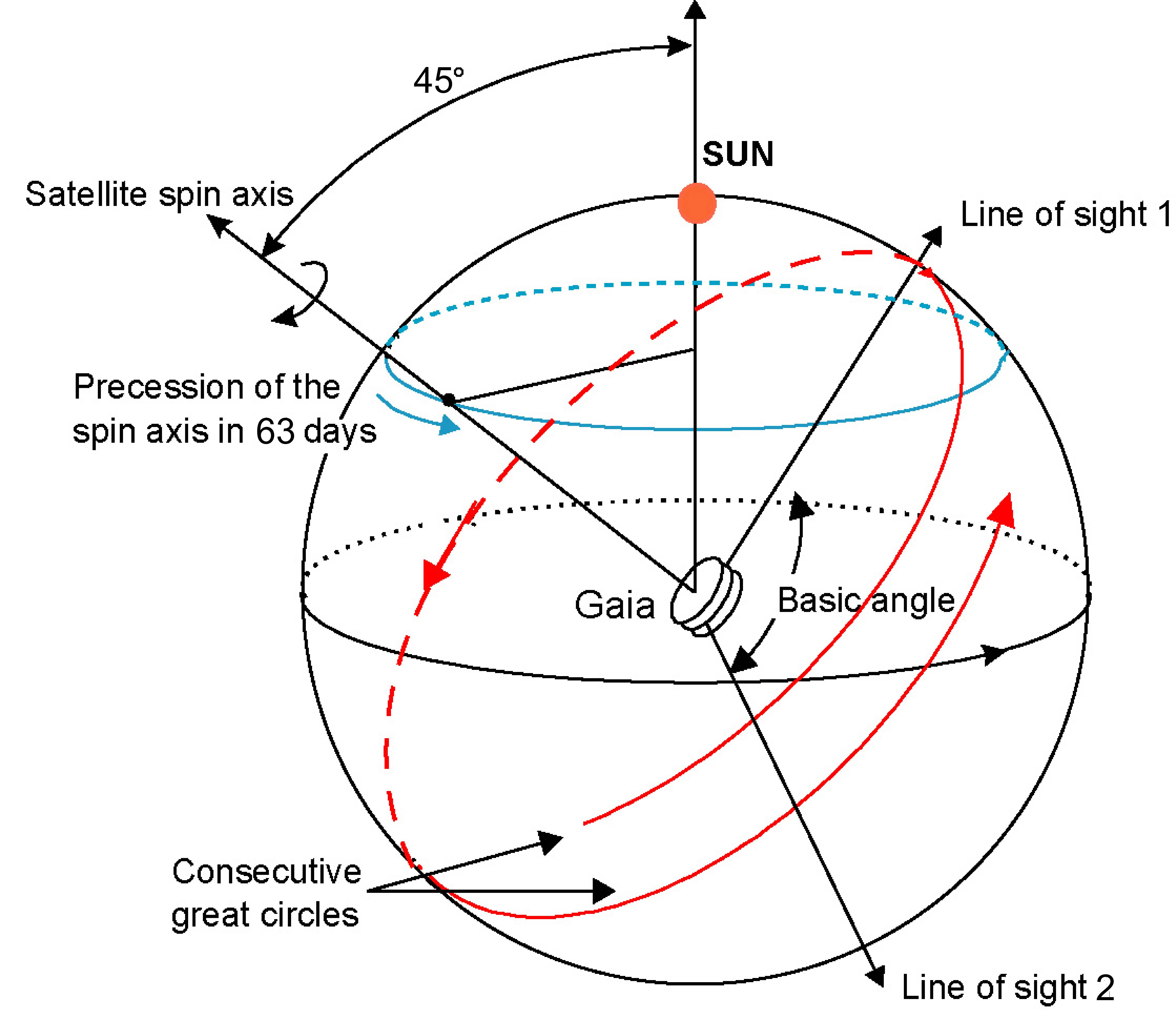Scanning Law - Gaia
Scanning Law |
|
Gaia will perform its observations from a controlled Lissajous-type orbit around the L2 Lagrange point of the Sun and Earth-Moon system. During its 5-year operational lifetime, the satellite will continuously spin around its axis, with a constant speed of 60 arcsec s-1. As a result, over a period of 6 hours, the two astrometric fields of view will scan across all objects located along the great circle 'perpendicular' to the spin axis. As a result of the basic angle of 106.5° separating the astrometric fields of view on the sky, objects transit the second field of view with a delay of 106.5 minutes compared to the first field. |
|
|
|
Gaia's spin axis does not point to a fixed direction in space (or on the sky) but is carefully controlled so as to precess slowly on the sky. As a result, the great circle that is mapped out by the two fields of view every 6 hours changes slowly with time, allowing repeated full sky coverage over the mission lifetime. The 'scanning law' prescribes how the satellite's spin axis evolves with time during the mission. The optimum scanning law (i) maximizes the angle ξ between the Sun and the spin axis at all times, and (ii) maximizes the uniformity of the sky coverage after 5 years of operation. The first requirement results from the fact that the parallactic displacement of transiting stars is proportional to sin ξ; a higher value of ξ thus leads to larger measurable parallaxes and higher end-of-mission astrometric accuracies. Thermal stability and power requirements, however, limit ξ to about 45°. The best strategy is thus to let the spin axis precess around the solar direction with a fixed angle of 45°. This combination of a spinning satellite, scanning the sky along great circles, and a precession of the spin axis is referred to as 'revolving scanning', and was used for the Hipparcos mission. The actual speed of precession of the spin axis on the sky should be small enough that consecutive great-circle scans overlap 'sufficiently', and large enough that all stars on the sky transit the astrometric fields 'sufficiently often'. The above requirements have been worked out in detail for Gaia, leading to an optimum nominal scanning law. For a spin rate of 60 arcsec s-1 and a solar aspect angle of 45°, the precession speed is such that 5 years of operation corresponds to 29 revolutions of the spin axis around the solar direction; the precessional period thus equals 63 days. On average, each object on the sky is observed about 70 times (two astrometric fields combined and 20% total dead time assumed). |
| Three animations about Gaia's Scanning Law are available in the Media Gallery. |
- Removed a total of (1) style text-align:center;
- Removed a total of (1) border attribute.
- Removed a total of (1) cellpadding attribute.
- Removed a total of (1) cellspacing attribute.








































 Sign in
Sign in
 Science & Technology
Science & Technology
